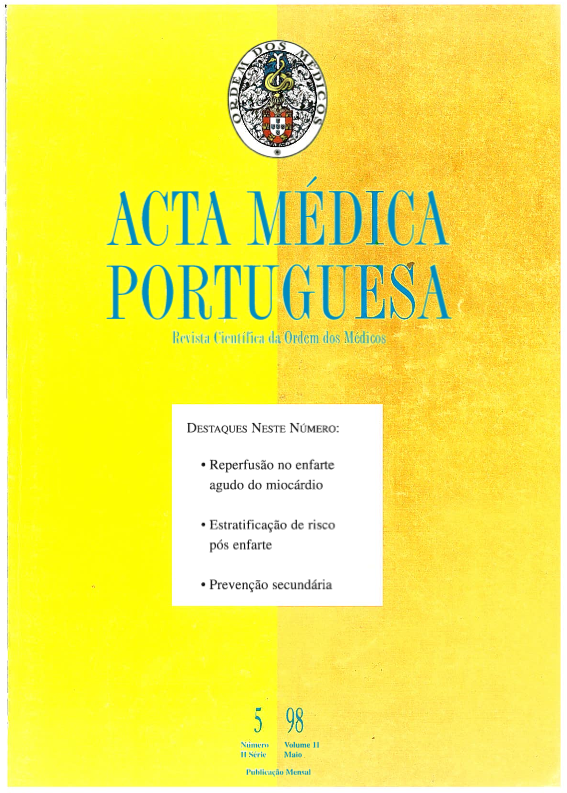Electrocardiografia de alta resolução no enfarte agudo do miocárdio.
DOI:
https://doi.org/10.20344/amp.2252Resumo
The author starts by highlighting the importance of risk stratification in patients who have survived a myocardial infarction. High resolution electrocardiography, also called signal-averaged electrocardiography (SAECG), appears in this setting as a diagnostic tool that, by providing important information about the way the intraventricular conduction of the electrical impulse is made, contributes to the characterization of the arrhythmogenic substrate, which is the basis of ventricular tachycardia and fibrillation. By resorting to the averaging of the electrocardiographic signal, SAECG enables us to detect ventricular late potentials whenever the analysis of that signal is made in time-domain. Further details, which will enrich the information on ventricular activation, can be obtained if the analysis is made in the frequency-domain (spectral analysis). The importance of detecting abnormalities in the SAECG recordings lies in the fact that those abnormalities are related to the occurrence of ventricular tachycardia and fibrillation, which are responsible for arrhythmic death. After referring to the criteria of positivity of SAECG and its reproducibility, the author approaches the most important part of the paper: the clinical applications of SAECG. After focusing on the interest of the method in noncoronary conditions, its usefulness in patients with acute myocardial infarction is pointed out. The author then mentions the prevalence of abnormalities in SAECG in patients with acute myocardial infarction and emphasizes the interest of the method in risk stratification. The author then presents the results of his Group in what concerns prevalence and prognosis. Finally, the author refers to the application of SAECG in other forms of coronary artery disease besides myocardial infarction.Downloads
Downloads
Como Citar
Edição
Secção
Licença
Todos os artigos publicados na AMP são de acesso aberto e cumprem os requisitos das agências de financiamento ou instituições académicas. Relativamente à utilização por terceiros a AMP rege-se pelos termos da licença Creative Commons ‘Atribuição – Uso Não-Comercial – (CC-BY-NC)’.
É da responsabilidade do autor obter permissão para reproduzir figuras, tabelas, etc., de outras publicações. Após a aceitação de um artigo, os autores serão convidados a preencher uma “Declaração de Responsabilidade Autoral e Partilha de Direitos de Autor “(http://www.actamedicaportuguesa.com/info/AMP-NormasPublicacao.pdf) e a “Declaração de Potenciais Conflitos de Interesse” (http://www.icmje.org/conflicts-of-interest) do ICMJE. Será enviado um e-mail ao autor correspondente, confirmando a receção do manuscrito.
Após a publicação, os autores ficam autorizados a disponibilizar os seus artigos em repositórios das suas instituições de origem, desde que mencionem sempre onde foram publicados e de acordo com a licença Creative Commons









